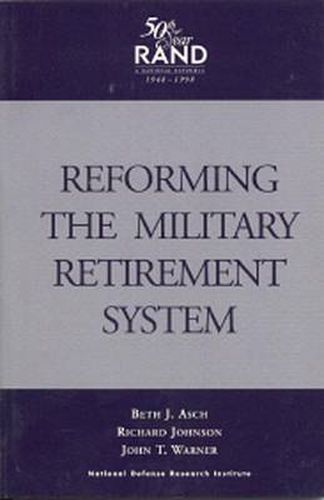Readings Newsletter
Become a Readings Member to make your shopping experience even easier.
Sign in or sign up for free!
You’re not far away from qualifying for FREE standard shipping within Australia
You’ve qualified for FREE standard shipping within Australia
The cart is loading…






The authors summarize the principal features of a model of military compensation developed by the authors earlier and use it to analyze the effects of converting the current military retirement system to an alternative system patterned after the Federal Employees Retirement System. The three parts of the alternative system are a retirement plan similar to that for civil service employees, a 7 percent across-the-board pay increase to counteract mandatory contributions under the new plan, and a set of retention bonuses targeted to address any retention problems. Because the alternative system may not create the services’ desired seniority profiles, a larger set of pay raises, retention bonuses, and/or separation payments would be added. In addition, the authors recommend that pay raises be skewed–be higher in the higher ranks. The authors consider the implications of this proposal in terms of the effects on cost, force size and structure, productivity, and force management flexibility.
$9.00 standard shipping within Australia
FREE standard shipping within Australia for orders over $100.00
Express & International shipping calculated at checkout
The authors summarize the principal features of a model of military compensation developed by the authors earlier and use it to analyze the effects of converting the current military retirement system to an alternative system patterned after the Federal Employees Retirement System. The three parts of the alternative system are a retirement plan similar to that for civil service employees, a 7 percent across-the-board pay increase to counteract mandatory contributions under the new plan, and a set of retention bonuses targeted to address any retention problems. Because the alternative system may not create the services’ desired seniority profiles, a larger set of pay raises, retention bonuses, and/or separation payments would be added. In addition, the authors recommend that pay raises be skewed–be higher in the higher ranks. The authors consider the implications of this proposal in terms of the effects on cost, force size and structure, productivity, and force management flexibility.